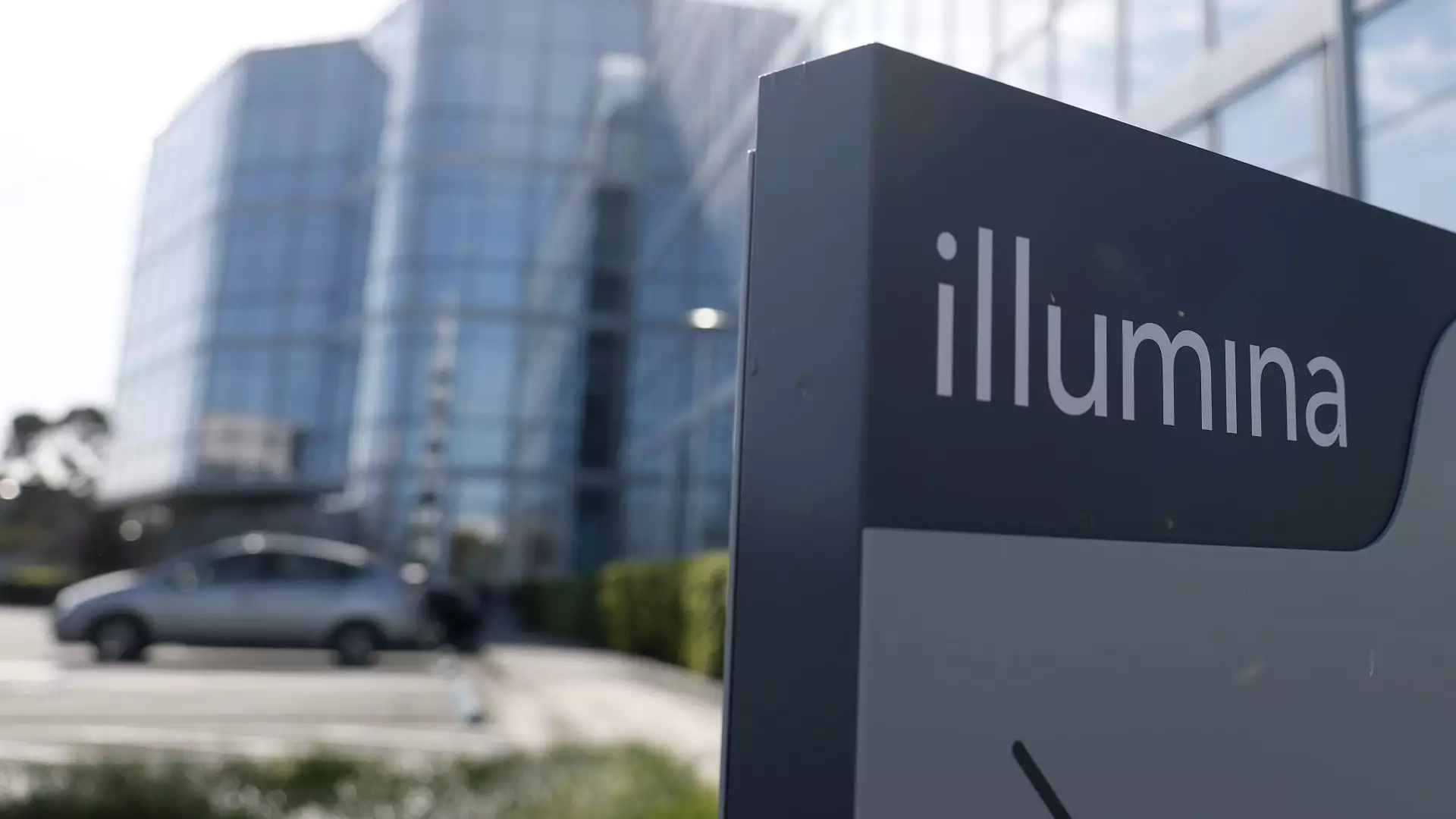Illumina, a titan in the realm of genomic testing, has witnessed remarkable highs and crushing lows within a short span of time. Once hailed as a pandemic savior with revenues soaring from $3.2 billion to an impressive $4.5 billion from 2020 to 2021, the company is now grappling with a decline that feels almost cruel. At its zenith, the stock was priced at a staggering $511 per share, but today it hangs around a mere $80. What happened? As the world transitions back to a state of normalcy, the urgency for sequencing machines has, unfortunately, dwindled. This transition symbolizes a classic case of market over-correction—in which stocks that skyrocketed due to temporary demand are now left floundering as the conditions that fueled that rise evaporate.
The primary misstep leading to Illumina’s present woes can be traced back to the tumultuous handling of its Grail business. Originally spun out as a separate entity, Illumina’s attempt to reacquire Grail has morphed into a fiscal nightmare, exacerbated by regulatory blocks from both U.S. and European authorities. This debacle not only cost the company financially but has also tarnished its corporate reputation. As political and economic uncertainties loom, particularly regarding the future of key governmental health institutions, Illumina finds itself boxed in; a cautionary tale of how mismanagement at critical strategic points can have far-reaching consequences.
Activism in the Boardroom: A Mixed Blessing
In response to Illumina’s declining fortunes, activist investor Corvex Management has stepped into the fray, ushering in new board members like Keith Meister, whose credentials include a legacy of activism that can indeed uplift or upend. While the appointment of such an experienced individual might seem like a beacon of hope, one must wonder whether the push for immediate changes will simply be a bandage on a much deeper infection. While I believe in the potential resilience of activist management, I am skeptical about the immediate impact it can achieve in a sector riddled with regulatory complexities and financial shortcomings.
Meister’s experience with board positions in firms like Biogen and Yum Brands might offer a silver lining, but anyone who has studied the volatility of biotech companies understands that boardroom changes can either accelerate recovery or sow further discord. When you introduce passionate voices advocating for immediate change, the stability needed for long-term growth often gets sacrificed. Illumina’s leadership must strike a fine balance between engaging with its stakeholders and instituting the kind of gradual evolution that will ensure sustainable growth.
The Market Monopoly: Boon or Bane?
Illumina claims an impressive 80% of the gene-sequencing market, a figure that seems rather daunting but hides a pressing concern. Market dominance can foster an environment where complacency breeds innovation stagnation. While economies of scale allow for lower prices and possibly improved profit margins—with consumables boasting margins nearing 80%—the overarching sense of invulnerability could become Illumina’s Achilles’ heel.
As the world demands novel approaches to health challenges like cancer, the company must remain adaptable—yet the new NovaSeq X sequencing technology rollout could prove more of a challenge than anticipated. Billed as a necessary evolution, the initial pressure on revenue could trigger a ripple of investor discontent that leads to reactions we’ve already seen in the stock price. The sheer weight of expectations can act as an indomitable force pulling down not only revenue but morale, further complicating the company’s recovery.
Regulatory Turbulence: A Stormy Sea Ahead
Illumina’s entanglements with regulatory bodies have been less than ideal, and the road ahead is likely riddled with speed bumps. The failure to navigate the acquisition of Grail successfully serves as a somber reminder of the labyrinth that governs biotech operations. Companies in such sectors need to be wary; backlash from regulatory impediments can cripple ambitious initiatives before they even take off. With the looming uncertainties surrounding the National Institutes of Health and its funding, biotech firms like Illumina find themselves dancing on a tightrope, perpetually second-guessing the implications of their strategies.
Illumina’s struggles emphasize that regulatory challenges are not merely bureaucratic roadblocks but can morph into significant existential threats. With the political environment shifting as the tides turn in unexpected directions, hope feels less assured for those holding shares in a once-thriving stock.
Innovation vs. Financial Recovery: The Central Dilemma
Perhaps the central question that frames Illumina’s future revolves around its capacity for innovation amidst an atmosphere of financial recovery pressure. The firm can boast of a rich history of groundbreaking developments in DNA sequencing technology, yet simultaneous financial upheaval has led to a dichotomy that is difficult to resolve. Balancing the requirements for innovation with the pressing need to appease shareholders has led to a precarious situation; the new technologies are crucial, yet if the rollout is mismanaged, it could exacerbate the current malaise.
While the corporate shifts aim to stabilize Illumina, the chasm between financial metrics and the relentless demand for technological progress has only widened. The road back to $70 billion in value—a once seemingly achievable goal—looks more like a mirage at this point. The company stands at a crossroads where every step must be deliberate, innovative, and instinctive, lest it find itself further entrenched in the quagmire of missed opportunities.

Leave a Reply